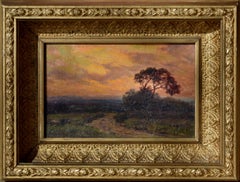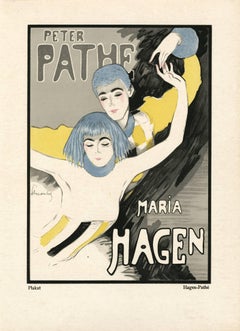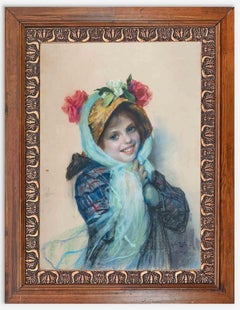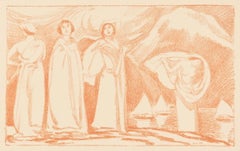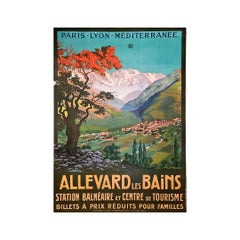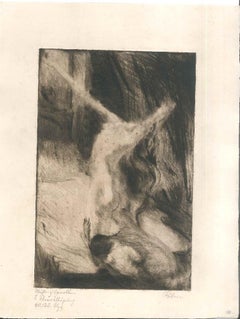"Houseboats in Moon Light", a rare early 20th century tonalist nocturnal harbor landscape scene at Greenbrae Boardwalk, San Rafael, California by Charles Rollo Peters (American, 1862-1928), 1912. Inscribed "Charles Rollo Peters Greenbrae, 1912" in the lower left corner. Presented in an antique giltwood frame. Image size: 19.5"H x 25.25"W
Auction record high for this noted Nocturnal and Tonalist artist is $58,000. Rare works like this one range $30,000-$35,000.
(Note: the photos showing the inscribed signature have been adjusted to show contrast and the artists inscribed signature in other photos enhanced by acrylic over inscription in the oil paint for visibility). Although not noted on verso, the title is taken from two others done the same year at Greenbrae Boardwalk near San Rafael, California.
Charles Rollo Peters (American, 1862-1928), called "The Poet of Night", is best known for his Tonalist landscapes, especially nocturnes, with much of his subject matter being scenes around his home in Monterey, California. James McNeill Whistler, who promoted the Tonalist aesthetic in Europe, was a major influence on his painting, and "is reported to have said that Peters was the only artist other than himself who could paint nocturnes." (Gerdts)
As Peters matured, his life became increasingly tumultuous, but the one stable part of his existence was his painting. He continued to pour his emotions into his work, creating lonely, mysterious nocturnes with a palette of deep blues and blacks. The scenes were invariably dotted with a speck of light emanating from the moon or a lighted window. His landscapes usually displayed a more prominent sky view and often included a winding path or road trailing off in the distance.
Peters was born in San Francisco in 1862 to a wealthy family, and in San Francisco attended Bates Private School for Boys and the City College, where his talent for sketching and painting became obvious and was encouraged.
After graduation from the College, he spent time as a commercial artist, but this pursuit did not hold his interest. In the mid 1880s, he began to study privately with Jules Tavernier and also attended classes with Virgil Williams and Christian Jorgensen at the California School of Design. During this period, he painted Bay-Area scenery.
In 1886, he began a four-year period of study and travel in Europe, enrolling in Paris at the Ecole des Beaux-Arts and the Academie Julian. His teachers were Jean-Leon Gerome and Fernand Cormon.
In San Francisco, where he returned in 1890, he met and married Kathleen Mary Murphy, and the couple immediately departed for an extended trip to England and France. Peters painted the countryside and produced numerous landscape paintings, especially moonlit views of Brittany and Paris---his first nocturnes, encouraged by the aesthetic of Whistler, whose influence was pervasive in England and France.
Upon his return to California about 1895, Peters held a large show in San Francisco and was able to sell many of his works. Soon after, he and his family relocated to Monterey, California where Peters became interested in California adobe ruins and missions as subjects for his paintings. Night paintings with rich blues highlighted by moon light became his signature work.
Like most Tonalists, he painted in his studio. It was written of him that Monterey residents often saw him "wandering about in the semi-darkness, taking down notes here and there, studying the different phases of light, and creating a vivid mental picture of the scene he wished to paint." (Lowrey 158)
In 1899, he made a tour with his collection of paintings through Chicago, Maine, Long Island, and New York City where he held a solo exhibition at the Union Club and received very favorable publicity. One reviewer of the Union Club work wrote: "The artist has studied the atmospheric effect of the night to good purpose, and in the representation of the silvery gray of moonlight he has arrived at singular proficiency."
Peters returned to Monterey in 1900, and purchased thirty acres of land where he built an estate. He exhibited in the annual exhibitions of the San Francisco Art Association and the Bohemian Club. Along with William Keith,
Xavier...
